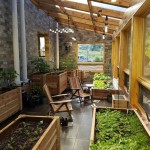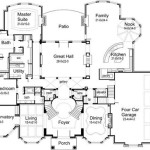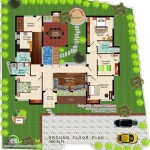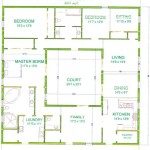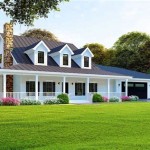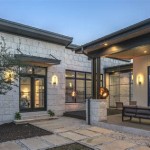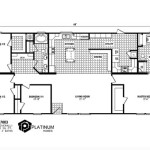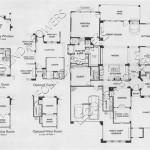Single-Story Ranch Home Plans: A Comprehensive Overview
Single-story ranch home plans remain a popular choice for prospective homeowners due to their accessibility, functionality, and inherent design flexibility. Characterized by their low-profile silhouette and horizontally oriented layout, ranch homes offer a distinct architectural aesthetic that complements a variety of landscapes and lifestyles. Understanding the nuances of single-story ranch home plans can empower individuals to make informed decisions when considering building or purchasing a home.
The origins of the ranch home can be traced back to California in the 1930s, where architect Cliff May is often credited with popularizing the style. Inspired by the region's Spanish Colonial and Western vernacular architecture, ranch homes were designed to be practical, informal, and well-suited to outdoor living. Their simplicity and adaptability led to their widespread adoption across the United States in the post-World War II era, cementing their place as a significant architectural style.
Modern single-story ranch home plans have evolved significantly from their mid-century predecessors. Contemporary designs often incorporate open-concept layouts, updated materials, and energy-efficient features while maintaining the core principles of accessibility and seamless indoor-outdoor integration. This article will explore various aspects of single-story ranch home plans, including their key features, advantages, and design considerations.
Key Features of Single-Story Ranch Home Plans
Single-story ranch homes are defined by several distinctive characteristics that contribute to their overall appeal and functionality. These key features differentiate them from other architectural styles and influence the living experience within the home.
Horizontal Layout: The defining feature of a ranch home is its single-story design, which emphasizes a horizontal orientation. This layout eliminates the need for stairs, making the home easily accessible for individuals of all ages and abilities. The sprawling design also allows for ample natural light and ventilation throughout the home.
Low-Pitched Roof: Ranch homes typically feature low-pitched roofs, often with wide eaves that provide shade and protection from the elements. The roofline contributes to the home's understated and relaxed appearance. Common roof styles include gable, hip, and shed roofs, each offering a slightly different aesthetic.
Open Floor Plans: Modern ranch home plans frequently incorporate open floor plans, which integrate the living room, dining room, and kitchen into a single, flowing space. This design promotes social interaction and creates a sense of spaciousness. Open floor plans are particularly well-suited for entertaining and family gatherings.
Attached Garages: Most ranch homes feature attached garages, providing convenient access to the home and protection for vehicles. The garage is often seamlessly integrated into the overall design, enhancing the home's curb appeal and functionality. Some ranch homes may also include carports or detached garages depending on the lot size and design preferences.
Large Windows and Sliding Glass Doors: Ranch homes are designed to maximize natural light and connect the interior spaces to the outdoors. Large windows and sliding glass doors are common features, providing ample views of the surrounding landscape and facilitating indoor-outdoor living. These features can significantly enhance the home's ambiance and energy efficiency.
Emphasis on Outdoor Living: Ranch homes often feature patios, decks, or porches that extend the living space beyond the interior walls. These outdoor areas provide opportunities for relaxation, recreation, and entertaining. The emphasis on outdoor living is a key characteristic of the ranch home style, reflecting its origins in the warm climate of California.
Advantages of Choosing a Single-Story Ranch Home Plan
Selecting a single-story ranch home plan offers numerous advantages that can enhance the quality of life for homeowners. These benefits range from accessibility and safety to cost-effectiveness and ease of maintenance.
Accessibility and Universal Design: The absence of stairs makes ranch homes exceptionally accessible for individuals with mobility limitations, including seniors and those with disabilities. This feature aligns with the principles of universal design, which aims to create living spaces that are usable by people of all ages and abilities. Ranch homes can be easily adapted to accommodate wheelchairs, walkers, and other mobility aids.
Safety: Single-story homes are inherently safer than multi-story homes, particularly in the event of a fire or other emergency. The absence of stairs facilitates quick and easy evacuation, reducing the risk of injury. Ranch homes also tend to be less prone to falls, which are a leading cause of injury among older adults.
Ease of Maintenance: Maintaining a single-story home is generally easier and less costly than maintaining a multi-story home. Tasks such as roof cleaning, gutter maintenance, and window washing can be performed without the need for ladders or scaffolding. The single-level design also simplifies plumbing and electrical repairs.
Cost-Effectiveness: In some cases, building a single-story ranch home can be more cost-effective than building a multi-story home of the same square footage. The simplified construction process and reduced need for structural supports can lead to lower construction costs. However, the overall cost will depend on factors such as the size of the home, the materials used, and the location of the building site.
Flexibility and Adaptability: Ranch home plans are highly flexible and can be adapted to suit a variety of lifestyles and needs. The open floor plans allow for easy customization of interior spaces, and the sprawling design provides ample opportunities for additions and expansions. Ranch homes can be easily modified to accommodate growing families, home offices, or other specific requirements.
Resale Value: Single-story ranch homes often hold their value well, particularly in areas with a large population of seniors or empty nesters. The accessibility and convenience of single-story living make them attractive to a wide range of potential buyers. The timeless appeal of the ranch home style also contributes to its enduring popularity and resale value.
Design Considerations for Single-Story Ranch Home Plans
Designing a single-story ranch home requires careful consideration of various factors to ensure that the final product meets the homeowner's needs and preferences. These design considerations encompass site selection, layout, and interior and exterior finishes.
Site Selection: The location of the building site can significantly impact the design and functionality of a ranch home. A large, flat lot is ideal for maximizing the horizontal orientation of the home. However, ranch homes can also be adapted to sloping or irregular lots with careful planning and design. The orientation of the home should be considered to maximize natural light and ventilation while minimizing exposure to harsh weather conditions.
Layout and Room Placement: The layout of a ranch home should be carefully planned to optimize functionality and flow. Open floor plans are popular, but it is important to consider the privacy and sound control needs of different areas of the home. Bedrooms should be located away from high-traffic areas, and the kitchen should be designed for efficient workflow. The placement of windows and doors should be carefully considered to maximize natural light and views.
Exterior Design and Materials: The exterior design of a ranch home should complement the surrounding landscape and reflect the homeowner's personal style. Common exterior materials include brick, wood siding, stucco, and stone. The roofline, windows, and doors should be carefully selected to enhance the home's curb appeal. Landscaping also plays a crucial role in creating a welcoming and attractive exterior.
Interior Design and Finishes: The interior design of a ranch home should be consistent with the overall architectural style and the homeowner's personal preferences. Common interior features include hardwood floors, vaulted ceilings, and fireplaces. The choice of colors, textures, and lighting should be carefully considered to create a comfortable and inviting atmosphere. Energy-efficient appliances and fixtures can help to reduce utility bills and minimize environmental impact.
Accessibility Features: When designing a ranch home, it is important to consider accessibility features that will enhance the usability of the home for individuals of all ages and abilities. These features may include wider doorways, grab bars in bathrooms, and lever-style door handles. Universal design principles should be incorporated throughout the home to create a comfortable and accommodating living environment.
Energy Efficiency: Energy efficiency is an increasingly important consideration in home design. Ranch homes can be designed to minimize energy consumption through the use of insulation, energy-efficient windows and doors, and solar panels. Proper insulation can help to regulate temperature and reduce heating and cooling costs. Energy-efficient appliances and lighting can also contribute to significant energy savings.
Future Expansion: When designing a ranch home, it is important to consider the possibility of future expansion. The sprawling design of a ranch home allows for easy additions, such as extra bedrooms, bathrooms, or living areas. The placement of utilities and the design of the existing structure should be carefully planned to facilitate future expansion without disrupting the existing living space.
Single-story ranch home plans offer a compelling combination of accessibility, functionality, and aesthetic appeal. By understanding the key features, advantages, and design considerations associated with this architectural style, prospective homeowners can make informed decisions and create a living space that meets their individual needs and preferences. Modern adaptations of the classic ranch home continue to provide comfortable and efficient living environments for a wide range of lifestyles.

Trending Ranch Style House Plans With Open Floor Blog Eplans Com

The Pineview Floor Plan 2 Bed Bath Single Story Ranch House 1 500sq Ft

11 Awesome Modern Ranch Style Home Design Ideas House Plans Basement

Ranch House Plans With Open Floor Blog Homeplans Com

House Plan 51987 Ranch Style With 3366 Sq Ft 4 Bed 3 Bath 1

Found On Bing From Www Architecturaldesigns Com Simple Ranch House Plans One Story

Dos Riatas Ranch House Plan Archival Designs

Ranch House Plans Style Home Designs The Designers

Tierney Ranch House Plans Luxury Floor

Beautifully Simple Ranch House Plans Dfd Blog

